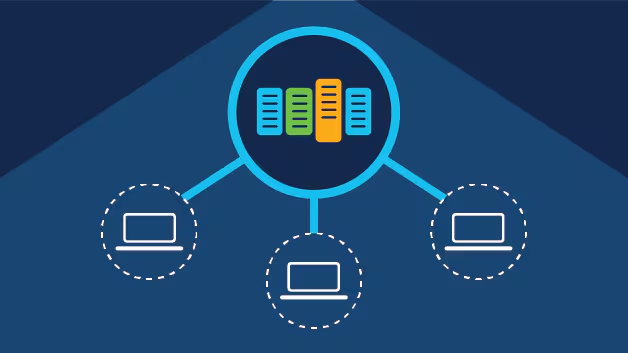
Table of Contents
A Virtual Machine (VM) is a software-based emulation of a physical computer that runs an operating system (OS) and applications just like a real computer. It is created by using virtualization software, allowing one physical machine (the host) to run multiple virtual machines (guests) simultaneously, each with its own operating system, software, and resources.
Key Features of a Virtual Machine:
- Isolation:
- Each VM is isolated from others on the same physical machine, meaning changes or failures in one VM do not affect the others. This makes it highly secure and reliable for multi-environment operations.
- Multiple Operating Systems:
- You can run different operating systems on the same physical machine, such as running Linux and Windows hosting VMs on a Mac or any combination of OSs on a server.
- Resource Allocation:
- The host machine allocates a portion of its CPU, memory (RAM), storage, and network resources to each VM. You can adjust the amount of resources for each VM as needed.
- Snapshots and Cloning:
- Virtual machines can be easily backed up using snapshots, which capture the state of the VM at a specific point in time. You can also clone VMs for rapid deployment of identical environments.
Virtualization Software (Hypervisors):
A hypervisor is software that creates and manages VMs on a host machine. There are two types of hypervisors:
- Type 1 (Bare-Metal Hypervisors):
- These run directly on the physical hardware without needing a host operating system. Examples include:
- VMware ESXi
- Microsoft Hyper-V
- Xen
- KVM (Kernel-based Virtual Machine)
- These run directly on the physical hardware without needing a host operating system. Examples include:
- Type 2 (Hosted Hypervisors):
- These run on top of an existing operating system (like Windows, macOS, or Linux) and manage VMs as applications. Examples include:
- VMware Workstation
- VirtualBox
- Parallels Desktop
- These run on top of an existing operating system (like Windows, macOS, or Linux) and manage VMs as applications. Examples include:
Uses of Virtual Machines:
- Server Consolidation:
- Multiple VMs can run on a single physical server, reducing hardware costs and optimizing resource use by consolidating workloads.
- Testing and Development:
- Developers can create isolated environments to test new software, applications, or configurations without affecting their main system or production environment.
- Running Legacy Applications:
- VMs can run older operating systems and applications that may not be compatible with modern hardware.
- Disaster Recovery:
- VMs can be easily backed up and moved to another server, allowing for quick recovery in the event of a system failure or disaster.
- Cloud Computing:
- Cloud platforms like Amazon Web Services (AWS), Microsoft Azure, and Google Cloud use VMs to offer scalable, on-demand computing resources. Users can launch and configure VMs remotely through these cloud services.
- Security and Isolation:
- VMs provide secure, sandboxed environments that are isolated from each other. This is useful for running applications that require high security or handling sensitive data.
Advantages of Virtual Machines:
- Cost Efficiency: By running multiple VMs on a single physical machine, you can save money on hardware, electricity, and space.
- Flexibility: VMs allow for the running of different operating systems and configurations on the same hardware.
- Easy Migration: VMs can be easily moved from one physical machine to another, supporting scalability and disaster recovery.
- Simplified Management: VMs can be easily managed, duplicated, and restored using snapshots and templates.
Disadvantages of Virtual Machines:
- Performance Overhead: VMs have a small performance overhead because they share hardware resources and require the hypervisor to manage them.
- Resource Contention: If too many VMs are running on the same physical machine, they might compete for CPU, RAM, and storage, causing slower performance.
- Complexity: Managing a large number of VMs can become complex, especially in environments with thousands of virtual machines.
In summary, a Virtual Machine enables the creation of multiple independent virtual computers on a single physical machine, offering flexibility, resource efficiency, and isolation for a wide range of use cases.